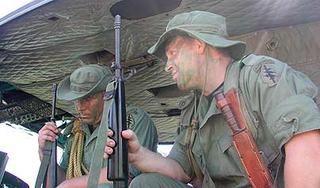POP AND POLITICS: Next Stop Vietnam

This programme examines the social factors that combined to make music-oriented youth culture the focus of the peace movement during the Vietnam conflict.
During the four years following passage of the Tonkin Gulf resolution in August 1964, which authorized U.S. military action in Southeast Asia, the American air war intensified and troop levels climbed to over 500,000.
Opposition to the war grew as television and press coverage graphically showed the suffering of both civilians and conscripts. In 1965 demonstrations in New York City attracted 25,000 marchers; within two years similar demonstrations drew several hundred thousand participants in Washington, D.C., London, and other European capitals.
Most of the demonstrations were peaceful, though acts of civil disobedience, intended to provoke arrest, were common. Much of the impetus for the antiwar protests came from college students. Objections to the military draft led some protesters to burn their draft cards and to refuse to obey induction notices.
By 1967 the Students for a Democratic Society (SDS) invoked the language of revolution in its denunciations of the war in Vietnam as an inevitable consequence of American imperialism.
This movement found its voice in popular music culture and some of the most famous artists to emerge from the 1960s had their roots in the anti-war culture. This programme examines the factors that led to this eruption in popular protest and looks at the legacy of the anti-war musical culture.

0 Comments:
Post a Comment
<< Home